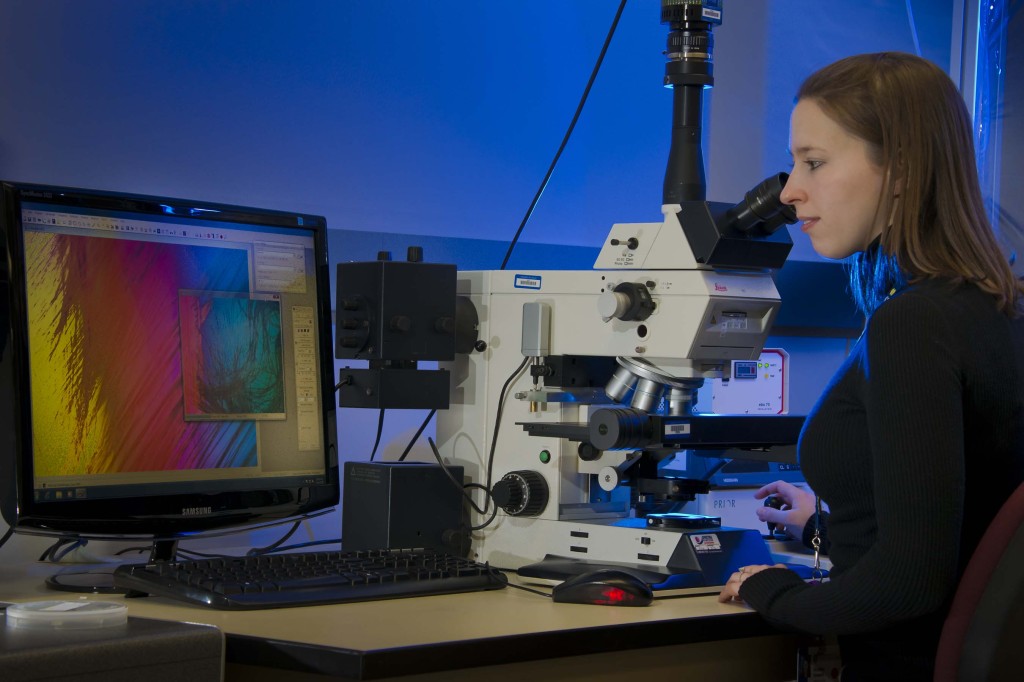
Former PhD student Heather Howard Liddell (photo, courtesy of Eugene Kowaluk), Prof. John Lambropoulos and Prof. Stephen Jacobs recently published two papers in Applied Optics (March and November 2013) on improving the performance of high-laser-damage-threshold, multilayer dielectric pulse-compression gratings through low-temperature chemical cleaning.

Abstract: A low-temperature chemical cleaning approach was developed to improve the performance of multilayer dielectric (MLD) pulse-compressor gratings for use in a high peak power laser system. X-Ray photoelectron spectroscopy (XPS) results guided the selection of targeted cleaning steps to strip specific families of manufacturing residues without damaging the grating’s fragile 3-D profile. Grating coupons cleaned using the optimized method consistently met requirements for high diffraction efficiency and high 1054-nm laser damage resistance at 10 ps. The disappearance of laser conditioning effects for the highest-damage-threshold samples suggested a transition from a contamination-driven laser damage mechanism to defect-driven damage for well-cleaned components.Acid piranha cleaning lead to the formation of chemically induced delamination defects. Causes were investigated and a model was developed. Failure of the MLD coating in response to hydrogen peroxide in the cleaning solution was revealed.
Spring 2014


